Choosing scissors for cutting nails in cats
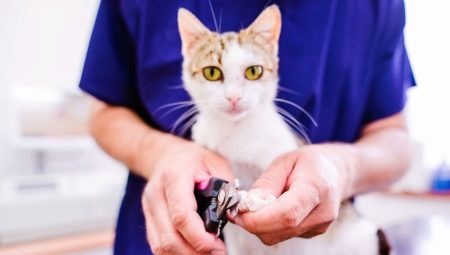
Clipping the claws of a domestic cat is a mandatory procedure that allows you not only to maintain the health of the pet, but also to protect interior items from the tenacious claws of the animal. You can take the cat to the veterinarian for the claw trimming procedure. Or you can buy special scissors and learn how to trim claws on your own. Moreover, this is a fairly simple procedure.
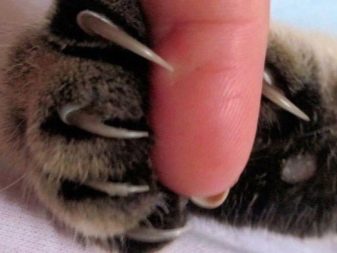
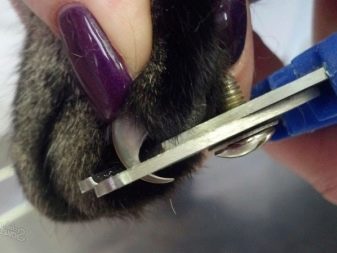
Why cut your claws?
The main goal of the procedure is to prevent the ingrowth of the claw. As soon as the claw begins to grow into soft tissues, inflammation and abscess begin inside the body, and the cat begins to limp.
In addition, too long claws can cause discomfort in active animals, for example, it can provoke injury when jumping from a height.
Pets with clipped claws are not so dangerous for wallpaper, upholstered furniture and other interior items. And also cutting nails for cats is important in several cases.
- Apartment maintenance of a cat. If a pet lives in the house who has access to the street, then, in fact, he himself will cope with the length of his claws, because in nature cats "do a manicure" by sharpening on hard surfaces or tree bark. The cat, who always lives in the house, does not have the opportunity to climb trees and grind its claws, so it needs artificial pruning.
- Sedentary lifestyle. An apartment cat, especially a neutered one, is often lazy and gluttonous, he is passive and prefers to spend most of his time lying on the couch. Such an animal should definitely carry out the claw cutting procedure regularly.
- Visit the exhibition. To prevent the four-legged exhibitor from harming visitors, he needs to trim his claws. The same goes for other activities in a cat's life, such as bathing.
- The appearance of children. When small children appear in the house, they should also be protected from tenacious cat claws, so it is important to regularly cut the claws of your pet.



Types of nail clippers
Cutting a cat's claws is possible with four options for claws.
- Special scissors. In appearance, these are ordinary nail scissors, but their blades have a concave rounded shape, and a hole is formed in the center. A cat's claw is placed in this zone, the blades are compressed and cut to the desired length.
- Forceps. They resemble pliers. To cut the claw to a certain length and not injure the animal, such a tool is equipped with a special limiter. And also there is a fuse that prevents the full disclosure of the blades. Due to the protective mechanism, the device is safe for children.
- Guillotine... The most popular option. This tool quickly and easily cuts the claws of a cat, but before that the owner needs to get used to it. The fact is that when using the guillotine, the captured length of the claw is completely invisible, so the owner must first get used to this method of work, after which he will learn to put in order the claws of his pet quite well.
- Grinders. This is an electric device with removable attachments that works like a file. The device connected to the network begins to rotate the head, which cuts off the cat's claw. Some models are equipped with restraints that allow you to remove a certain length of the claw. Typically, this equipment is used to work in professional grooming salons.
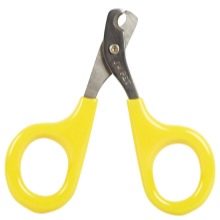
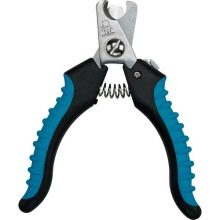
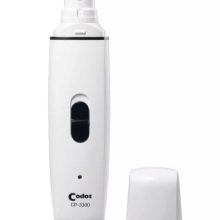
How to choose?
When choosing cat clippers from the store, try holding the chosen tool in your hand. Try to get a feel for how comfortable it will be to use a particular model. If the pet is still very small or it is a miniature cat, then it is recommended to give preference to scissors or tongs. Be sure to choose a tool made of high-quality steel, but such that there are rubber pads on the handles - it is more convenient to work with such scissors.
If the choice fell on a guillotine, then take a model equipped with a limiter.
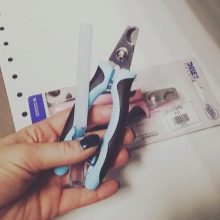

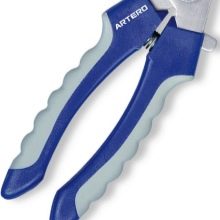
How to cut?
To properly carry out the procedure for trimming cat claws, you should study the structure of this part of the body. Looking at the claw in the light, you can see that its color is different. Note the pink part of the claw. These are blood vessels, so pruning in this area is prohibited.
During the growth of the claw, the capillaries penetrate into it, if the capillary is touched during trimming, this can provoke bleeding.
Naturally, the pet will experience pain at the same time and the next time it will be quite difficult to force him to sit quietly during the manipulation.
To avoid such a problem, it is recommended to cut only the curved part of the nail, to the area where the vessel is adjacent. It is better to start the procedure from adolescence so that the kitten gets used to circumcision. Despite the fact that correctly performed pruning is painless for the animal, the cat still feels some discomfort. After all, usually it needs to be tightly squeezed into a blanket, and this scares the animal. If pruning is done from childhood, then the pet will have time to get used to it, so it will not panic at the sight of scissors. The procedure consists of several stages.
- Prepare your instrument. Disinfect him, wash your hands.
- It is better to perform a "manicure" on the cat together with an assistant. One person should hold the animal, the other should trim. If there is no partner, then it is recommended to wrap the cat tightly in a blanket, leaving only the head and the desired paw.
- Having fixed the pet well, you need to take the paw and press your finger on the pad, then the animal will show its claws.
- If the claw is light, then it is trimmed at a distance of 1-2 mm to the pink zone.The pigmented claw is trimmed 1–2 mm from the tip.
- If the owner nevertheless touches a blood vessel, then it is recommended to moisten a cotton pad with hydrogen peroxide and treat the damage.

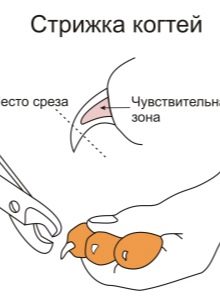
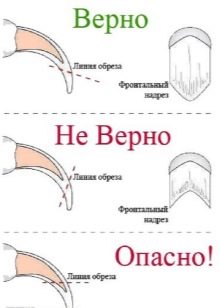
The following additional recommendations for performing the procedure should be adhered to:
- it is believed that it is impossible to trim the nails of cats with ordinary scissors, but this is not entirely true - simple scissors are really quite inconvenient to use, but if the owner of the animal has extensive experience in carrying out the procedure, then this tool will cope with it;
- before starting the operation, let the cat smell an unfamiliar instrument so that he understands that this object is not dangerous;
- in order to calm down the pet after such an uncomfortable manipulation, it is recommended to reward him with a “tasty treat”, to stroke him, to praise him for his patience in an affectionate voice;
- the frequency of the procedure at home depends on the lifestyle of the pet, the growth rate of the claws of a particular individual and other factors, but the generally accepted interval is once every two weeks.
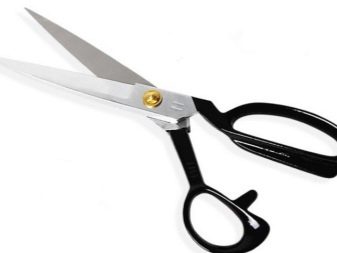

See below for an overview of cat nail clippers and how they are used.
































